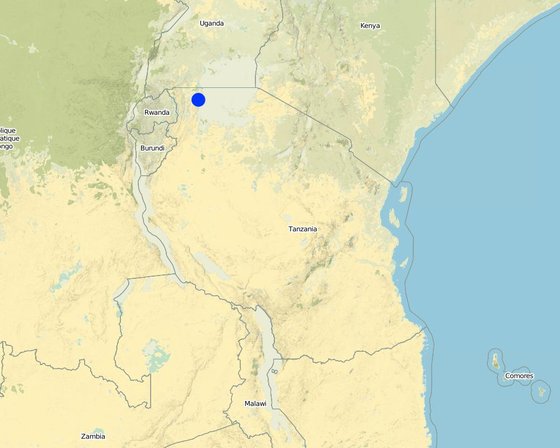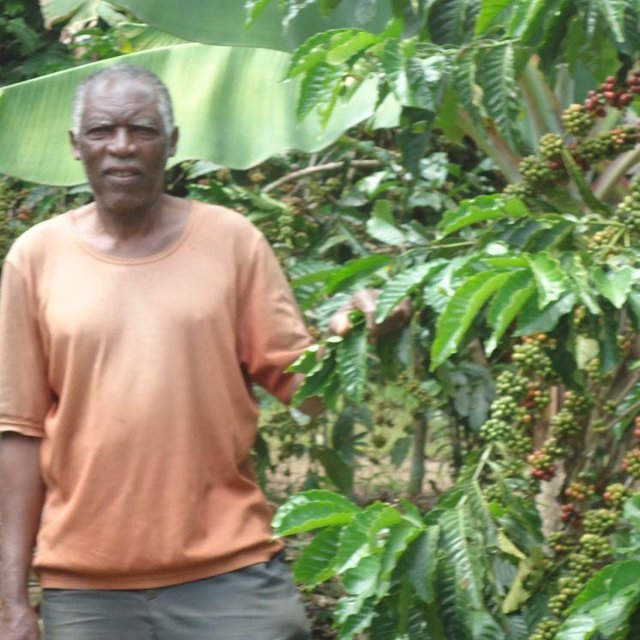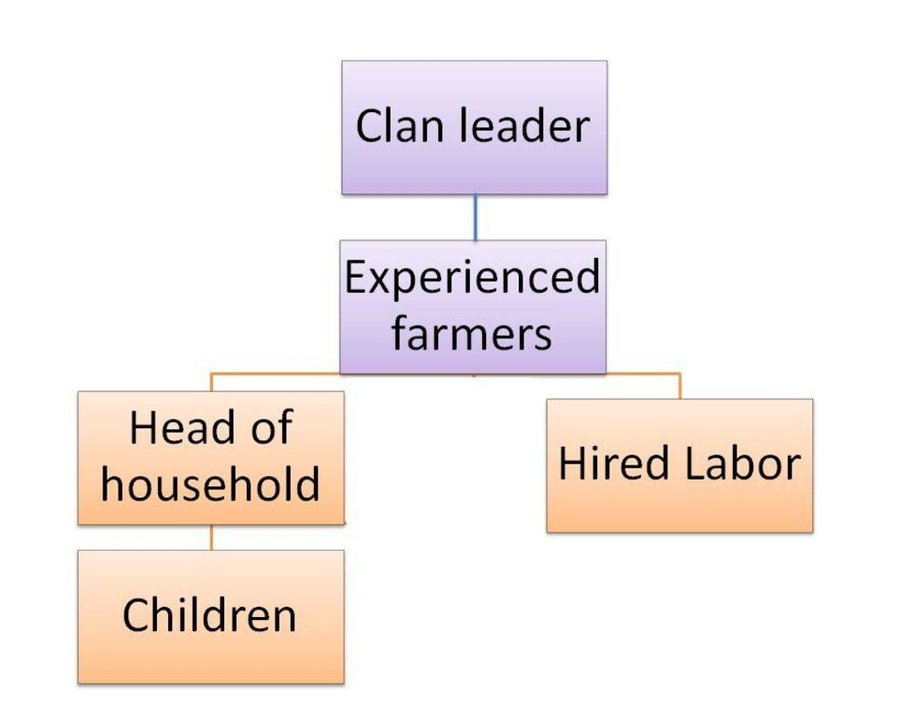Indigenous knowledge transfer
(Tanzania, República Unida de)
Emikolele n'emyegesheleze. (HAYA)
Descripción
Indigenous knowledge transfer, is a common phenomena in farming societies whereby elders taught younger generations the practical aspects in production and emphasizes the norms and proms in folk story tales.
Aims / objectives: The main aim of this approach is to improve agricultural production through collaboration of households and the entire community. The approach ensures food security and income with land conservation. The approach is achieved by voluntary learning from the experienced elder farmers. This is achieved by creation of friendly environmental to implement the learning process. The approach is also characterized by traditional prons and norms of the young generation to inherit the elders property.
Methods: The elders spent evening hours to tell farming stories to the younger generation. These stories refer to the success of soil fertility improvement, water resources accessibility and utilization, land use type and farming practices in the community.
Also, practical aspect is attained by involving the younger generation in porting and allocating the land according to land use type.
Stages of implementation: 1. Experienced farmers telling farming stories to the younger while younger listen and ask questions.
2. The elders ask old sayings and elaborate their meaning.
3. Elders demonstrating to the younger, how farming activity are done.
4. The younger implement farming activity and plan for their future.
5.The land is allocated to the younger according to land use type.
6. The younger farmers now are in the position to train their successors.
Role of stakeholders: The major stakeholders are Clan leaders, Head of households, mother, children and hired labour. The roles of Clan leaders are to organize the farming story sessions to the elders and reinforce traditional land norms and proms. The roles of Head of household are to conduct evening farming stories at homestead, encouraging the younger to practice farming by giving incentive according to performance. The roles of the children and hired labour is to work in the head of household farms and ensure proms and proms abides.
Other important information: Nowdays, the approach succeeded to expand cropland beyond grasslands and forestland.
Lugar

Lugar: Bukoba District , Tanzania, Tanzania, República Unida de
Georreferencia de sitios seleccionados
Dato de inicio: n.d.
Año de conclusión: n.d.
Tipo de Enfoque
-
tradicional/ local
-
iniciativa local reciente/ innovadora
-
proyecto/ basado en un programa

Mr. Habibu Shaban applying Buhaya Agrofoerstry (Godfrey Baraba (DED -Bukoba, S.L.P 491, Bukoba))
Metas del Enfoque y entorno facilitador
Propósitos/ objetivos principales del Enfoque
The Approach focused mainly on SLM with other activities (Products diversification, livelihood improvements and land resouces inheretence.)
The main aim of the approach is to improve productivity and ensure younger generations productive land ownership and user rights.
The SLM Approach addressed the following problems: Lack of knowledge and skills of farm technologies, collaboration between households and community, eroded/weakened traditional norms, land ownership inequalities.
Condiciones que facilitan la implementación de la/s Tecnología/s aplicadas bajo el Enfoque
-
Marco de trabajo legal (tenencia de tierra, derechos de uso de tierra y agua): The existing land ownership, land use rights / water rights moderately helped the approach implementation: Individual land ownership without lease smoothing the transfer of land from one parents to offspring. therefore assured perfect training grounds
Condiciones que impiden la implementación de la/s Tecnología/s aplicadas bajo el Enfoque
-
Normas y valores sociales/ culturales/ religiosos: Land ownership inequalities, whereby women and girls are not allowed to inheret the clan land.
Treatment through the SLM Approach: Improve women participation in decision making
-
Disponibilidad/ acceso a recursos y servicios financieros : Farming activities regarded as volatile assets by most financial institutions
Treatment through the SLM Approach: Introduce and impliment subsidies policy.
-
Entorno institucional: The clan leaders not strong in terms of formal training. Weak reinforcement of laws and bylaws.
Treatment through the SLM Approach: Use extension service staffs to promote informal training.
-
Marco de trabajo legal (tenencia de tierra, derechos de uso de tierra y agua): Community not well knowledgeable on land laws.
Treatment through the SLM Approach: Train village land law to the community.
-
Conocimiento de MST, acceso a apoyo técnico: Lack of farming technologies transfer.
Treatment through the SLM Approach: Facilitate extension services.
-
Otros: Some plant spps habours pests
Treatment through the SLM Approach: Planting of pecit repelant species. eg Kajaye
Participación y roles de las partes interesadas involucradas
Partes interesadas involucradas en el Enfoque y sus roles
| ¿Qué partes interesadas/ entidades implementadoras estuvieron involucradas en el Enfoque? |
Especifique las partes interesadas |
Describa los roles de las partes interesadas |
| usuarios locales de tierras/ comunidades locales |
Household and hired laborers |
Adoption farmers tends to use grups for socilization and participation. The difference between the participation of men and women is that, women train children only, while men can also train hired laborers. Hired labour normally spent the day while folk story conducted at night. Labourers including men and women are disposal to men trainings.Women participate in training at all stages but are not involved in land allocation to the younger generations. Women: Have the rights to produce annual crops and decide on the income from it.
Younger: Are assured of land inheritance from their parents.
laboures: Are paid at the market price.
Poor households: assured food security as work for food, informal land renting i.e paying back the prorate produce. |
| gobierno local |
Provides extension services for up scaling the aproach. |
|
Involucramiento de los usuarios locales de tierras/ comunidades locales en las distintas fases del Enfoque
ninguno
pasivo
apoyo externo
interactivo
auto-movilización
iniciación/ motivación
Household members. To attend and particiapte in appropriate sessions.
planificación
Clan leaders: To identify and select problems and find solutios
Head of Household:
Children.
Siblings:
Hired labour:
implementación
Head of the clan: To organise the sittings.
Head of Household:To inform the family and conduct the dialogue
Children: To participate in farm production, aceptance of allocated land, Using the located land according to land use type.
Siblings: To facilitate divison of labour
Hired labor:
monitoreo y evaluación
Clan head: To call the meeting
Community leaders: To visit farms and other land, To observe and deliver the assessments.
Research
Few farmers participated in adaptive resarch on Kibanja system 1n 1993.
Flujograma
Actors within the Indigenous knowledge transfer approach

Autor: Godfrey Baraba
La toma de decisiones en la selección de Tecnología MST
Las decisiones fueron tomadas por
-
solamente usuarios de tierras (autoiniciativa)
-
principalmente usuarios de tierras con el apoyo de especialistas MST
-
todos los actores relevantes, como parte de un enfoque participativo
-
principalmente por especialistas MST en consulta con usuarios de tierras
-
solo por especialistas MST
-
por políticos/ líderes
La toma de decisiones se basa en
-
la evaluación de conocimiento MST bien documentado (la toma de decisiones se basa en evidencia)
-
hallazgos de investigaciones
-
la experiencia personal y opiniones (no documentadas)
Apoyo técnico, fortalecimiento institucional y gestión del conocimiento
Las siguientes actividades o servicios fueron parte del enfoque
-
Construcción de capacidades / capacitación
-
Servicio de asesoría
-
Fortalecimiento institucional (desarrollo institucional)
-
Monitoreo y evaluación
-
Investigación
Construcción de capacidades/ capacitación
Se proporcionó capacitación a las siguientes partes interesadas
-
usuarios de tierras
-
personal de campo/ consejeros
Forma de capacitación
-
en el contexto de trabajo
-
de agricultor a agricultor
-
áreas de demostración
-
reuniones públicas
-
cursos
Servicio de asesoría
Se proporcionó servicio de asesoría
-
en los campos de los usuarios de tierras
-
en centros permanentes
Name of method used for advisory service: Train and Visit (T&V); Key elements: Subject Matter Specialist trin field staff on fortnight bases. Field staff visit Progressive farmers and train them, Field Staffs visit Farmers to assess the performance and give feed back to Subject Matter Specialist; The method is very effective under a strong economical situation.
Advisory service is inadequate to ensure the continuation of land conservation activities; Farmer field schools can't reach farming communities with extension staffs based on Ward level.
Fortalecimiento institucional
Se fortalecieron/ establecieron instituciones
-
no
-
sí, un poco
-
sí, moderadamente
-
sí, mucho
Describa la institución, los roles y las responsabilidades, miembros, etc.
Tipo de apoyo
-
financiero
-
construcción de capacidades/ entrenamiento
-
equipo
-
Agricultural advisory services.
Detalles adicionales
Monitoreo y evaluación
bio-physical aspects were regular monitored by land users through observations; indicators: activities according to the season.
bio-physical aspects were ad hoc monitored by land users through measurements; indicators: Customary land law, land inheretance protocals.
socio-cultural aspects were regular monitored by land users through observations; indicators: Harvesting season
socio-cultural aspects were ad hoc monitored by other through measurements
economic / production aspects were regular monitored by land users through observations
management of Approach aspects were regular monitored by None through observations
management of Approach aspects were ad hoc monitored by None through measurements
There were few changes in the Approach as a result of monitoring and evaluation: Monitoring and Evaluation component took very minimal attention.
There were no changes in the Technology as a result of monitoring and evaluation
Investigación
La investigación trató los siguientes temas
-
sociología
-
economía/ marketing
-
ecología
-
tecnología
Research was carried out on station
Financiamiento y apoyo material externo
Presupuesto anual en dólares americanos para el componente MST
-
< 2,000
-
2,000-10,000
-
10,000-100,000
-
100,000-1,000,000
-
> 1,000,000
Precise annual budget: n.d.
Approach costs were met by the following donors: local community / land user(s): 100.0%
Los siguientes servicios o incentivos fueron proporcionados a los usuarios de las tierras
-
Apoyo financiero/material proporcionado a los usuarios de tierras
-
Subsidios para insumos específicos
-
Crédito
-
Otros incentivos o instrumentos
Otros incentivos o instrumentos
Agricultural advisory services.
Análisis de impacto y comentarios de conclusión
Impactos del Enfoque
No
Sí, un poco
Sí, moderadamente
Sí, mucho
¿El Enfoque mejoró cuestiones de tenencia de tierra/ derechos de usuarios que obstaculizaron la implementación de la Tecnologías MST?
Motivación principal del usuario de la tierra para implementar MST
-
producción incrementada
-
incremento de la renta(bilidad), proporción mejorada de costo-beneficio
-
reducción de la degradación de la tierra
-
reducción del riesgo de desastres naturales
-
carga de trabajo reducida
-
pagos/ subsidios
-
reglas y reglamentos (multas)/ aplicación
-
prestigio, presión social/ cohesión social
-
afiliación al movimiento/ proyecto/ grupo/ redes
-
conciencia medioambiental
-
costumbres y creencias, moral
-
conocimiento y capacidades mejorados de MST
-
mejoramiento estético
-
mitigación de conflicto
Sostenibilidad de las actividades del Enfoque
¿Pueden los usuarios de tierras sostener lo que se implementó mediante el Enfoque (sin apoyo externo)?
It has been in application for very long time, and no signs of retardation observed.
Conclusiones y lecciones aprendidas
Fortalezas: perspectiva del usuario de tierras
Fortalezas: punto de vista del compilador o de otra persona recurso clave
-
Local resource person, obedience and committed community.
Debilidades/ desventajas/ riesgos: perspectiva del usuario de tierrascómo sobreponerse
Debilidades/ desventajas/ riesgos: punto de vista del compilador o de otra persona recurso clavecómo sobreponerse
Referencias
Fecha de la implementación: 5 de diciembre de 2012
Últimas actualización: 6 de julio de 2017
Personas de referencia
-
Godfrey Baraba (godfreybaraba@yahoo.com) - Especialista MST
-
Bertha Munyaga (bkmunyaga@yahoo.com) - Especialista MST
-
Iwona Piechowiak (iwona.piechowiak@yahoo.co.uk) - Especialista MST
-
Fidelis Kaihura - Especialista MST
Descripción completa en la base de datos de WOCAT
La documentación fue facilitada por
Institución
- Bukoba district council (Bukoba district council) - Tanzania, República Unida de
- Food and Agriculture Organization of the United Nations (FAO) - Italia
Proyecto
- The Transboundary Agro-ecosystem Management Project for the Kagera River Basin (GEF-FAO / Kagera TAMP )
Referencias claves
-
http://www.fao.org/nr/kagera/en/: Kagera TAMP project website






